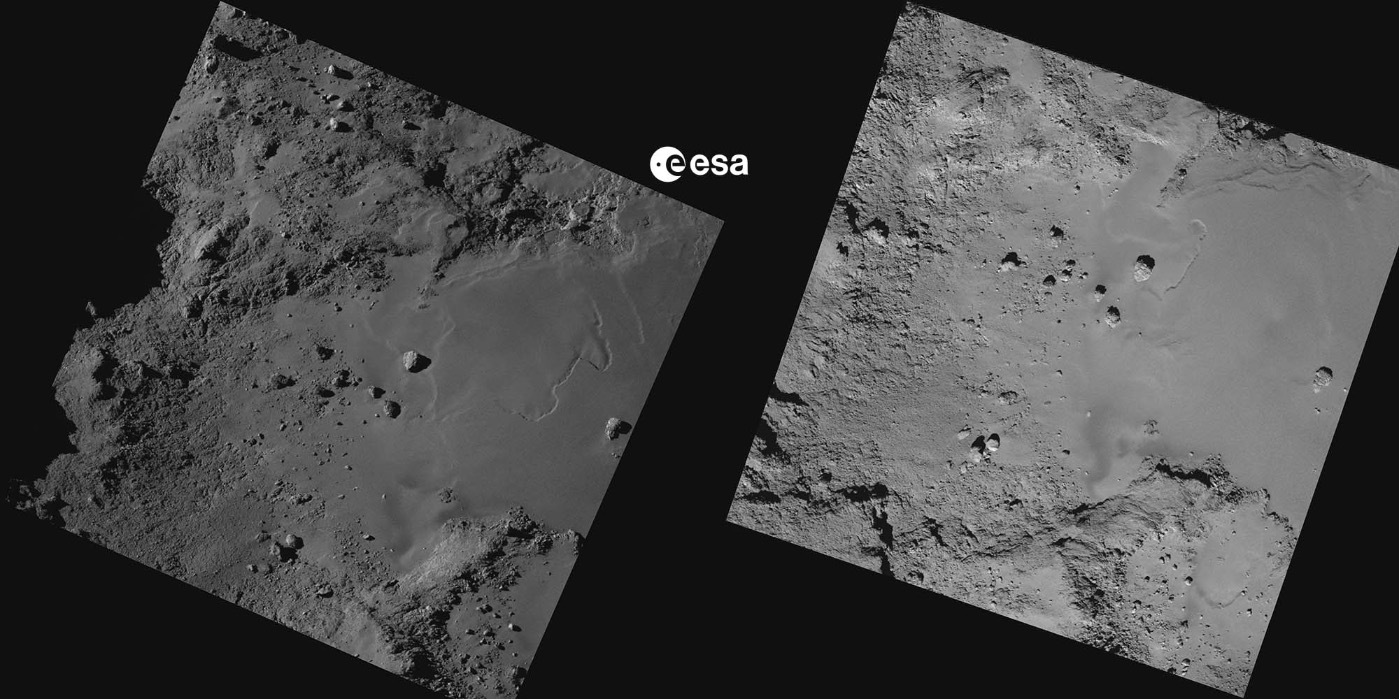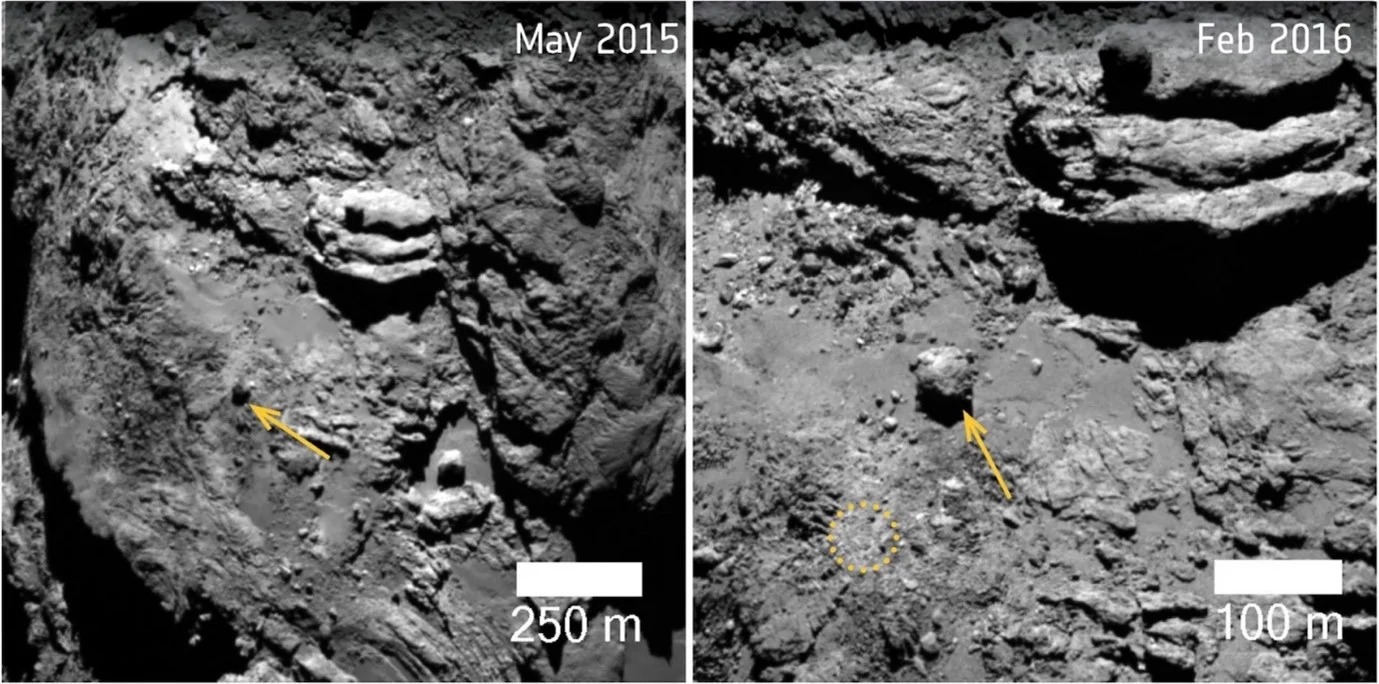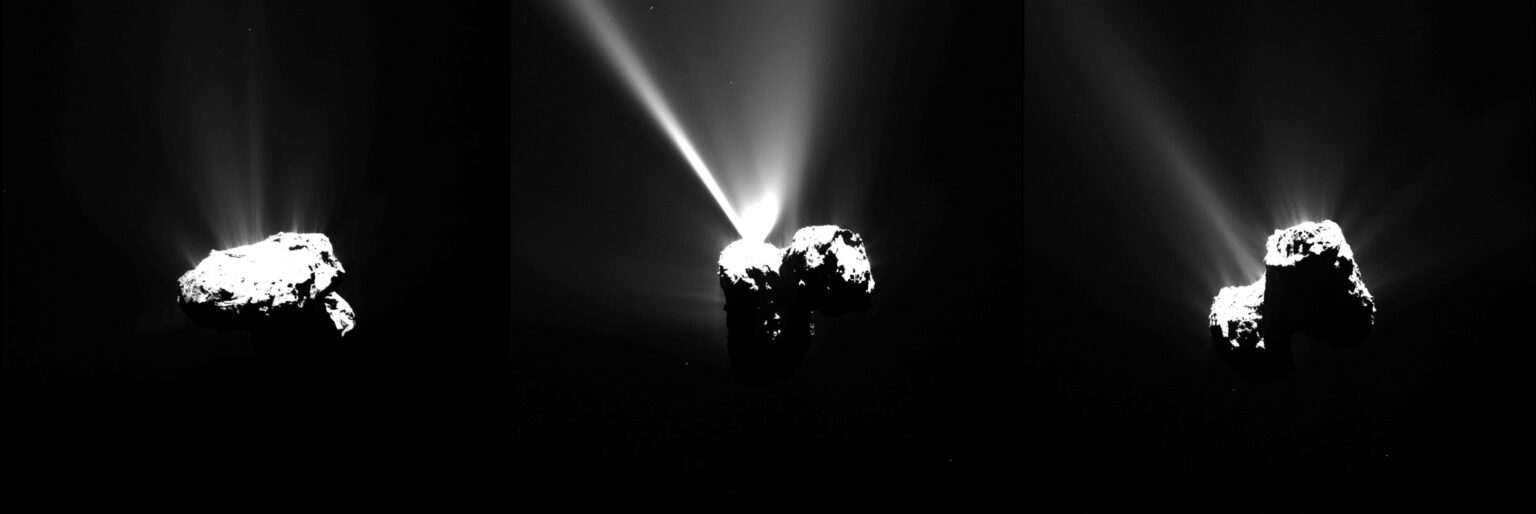In the period from 2014 to 2016, the Rosetta spacecraft of the European Space Agency (ESA) studied comet 67P/Churyumov-Gerasimenko hundreds of millions of kilometers from Earth. The spacecraft collected data on the structure and geology of the space rock. Now the ESA is asking the keen eyes of the public to study the photos of the comet and report on the differences in the characteristics of its surface that have changed over time.

“Given the complexity of the images, the human eye is much better at detecting small changes between two images than automated algorithms,” said Sandor Kruk, an astrophysicist at the Max Planck Institute for Extraterrestrial Physics
Keen eyes to help science
Using a tool called Rosetta Zoo, volunteers are invited to look at parallel images of different areas of the 67P/Churyumov-Gerasimenko surface taken before and after it approached the Sun. Volunteers can study photographs: zoom in and rotate. Users are invited to specify the type of geological feature that, in their opinion, can be represented in the image: dust, boulder or erosion.

“Over the past few years, astrophotographers and space enthusiasts have accidentally discovered changes and signs of activity in Rosetta images. However, we need more people to process a huge amount of data. We definitely need more keen eyes!” said Bruno Merin, head of the ESA ESAC Scientific Data Center in Spain.
Voluntary work on the data will be used to create maps of active areas on the surface of the comet. The more eyes are glued to these photos, the more information about ancient debris floating in our Solar System can be obtained.
Rosetta and 67P/Churyumov-Gerasimenko
67P/Churyumov-Gerasimenko was first discovered in 1969 by Ukrainian Klim Ivanovich Churyumov. The comet has an elliptical orbit with an orbital period of 6.5 years. When Rosetta arrived at the object in 2014, it became the first spacecraft to encounter this comet.

When comet 67P moved in its orbit, the Sun illuminated it from its different sides. This helped Rosetta to examine the surface of the object in detail – its landscape was captured in numerous images taken with the OSIRIS onboard camera. The number of photos received from the device is huge, but processing them all is an extremely difficult task.
Follow us on Twitter to get the most interesting space news in time
https://twitter.com/ust_magazine

